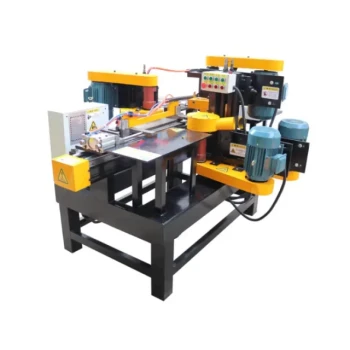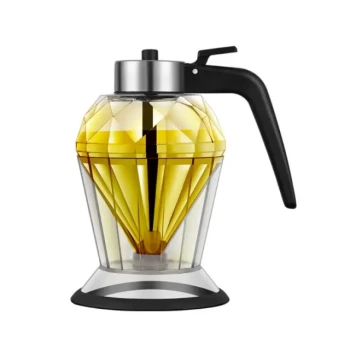At its core, a honey press is valuable because it offers a highly efficient method for separating honey from beeswax by crushing the comb. This approach, known as the "crush and strain" method, maximizes the yield of both honey and wax, making it an essential tool for specific beekeeping practices where comb preservation is not the primary goal.
While centrifugal extractors are designed to preserve honeycomb for reuse, a honey press is engineered to extract every possible drop of honey from the comb, simultaneously preparing the beeswax for rendering into a valuable secondary product.

The Core Function: Maximizing Yield Through Crushing
A honey press operates on a straightforward mechanical principle. It provides a distinct advantage for beekeepers focused on total product output rather than infrastructure reuse within the hive.
How a Honey Press Works
A honey press uses mechanical force, typically from a screw or hydraulic jack, to compress honeycomb placed inside a slatted or perforated basket. This immense pressure squeezes the liquid honey out through the openings, leaving behind a compressed puck of relatively dry beeswax. The collected honey is then strained to remove any remaining wax particles.
Why This Method Unlocks More Product
Centrifugal extractors work by slinging honey out of the cells, but they always leave a small amount of honey behind. The crush and strain method ensures that nearly 100% of the honey is captured.
Furthermore, this process perfectly separates the two key hive products. You are left with pure, raw honey and a dense cake of beeswax that is ready to be melted, filtered, and used for candles, cosmetics, or other value-added products.
When is a Honey Press the Right Tool?
A honey press isn't a universal replacement for an extractor. Its value is highest in specific contexts where crushing the comb is either necessary or desirable.
For Top Bar Hives and Foundationless Beekeeping
Beekeepers using Top Bar hives or other foundationless methods rely on the crush and strain method. The comb in these hives is often irregularly shaped and not supported by a rigid frame, making it unsuitable for a centrifugal extractor. The honey press is the standard, most effective tool for this style of beekeeping.
For Processing Cappings and Broken Comb
Even beekeepers who primarily use centrifugal extractors find immense value in a honey press. When you uncap frames before extraction, those wax cappings are saturated with honey. A press is the perfect tool to reclaim this honey and separate the valuable cappings wax, which is considered the purest wax in the hive.
For Maximizing Your Beeswax Harvest
If producing beeswax is a significant goal for your operation, a press is a superior choice. It streamlines the process of separating wax from honey, providing a clean, compressed block of wax that requires minimal further processing before rendering.
Understanding the Trade-offs: Press vs. Extractor
Choosing a honey press involves a fundamental trade-off between maximizing your current harvest and preserving resources for your bees.
The Cost: Comb Destruction
The primary trade-off is that the comb is destroyed. Bees expend a tremendous amount of energy to produce wax and build comb, consuming roughly eight pounds of honey to create just one pound of wax. Using an extractor preserves this comb, allowing bees to refill it quickly and redirect their energy toward honey production.
The Benefit: A Different Honey Profile
Crushing the comb often incorporates more pollen and propolis into the final product. While this requires thorough straining, some consumers value this minimally-processed honey for its robust flavor and potential health benefits.
The Workflow: Efficiency in Batches
A press allows for a continuous workflow, especially in larger operations. You can crush large batches of honeycomb and let the honey drain over time while you work on other tasks. This contrasts with the more hands-on, cyclical process of loading, spinning, and unloading a centrifugal extractor.
Making the Right Choice for Your Apiary
Your beekeeping philosophy and hive management style should dictate your choice of equipment.
- If your primary focus is maximizing total yield (honey and wax): A honey press is the ideal tool, as it extracts nearly all honey and efficiently prepares the wax for rendering.
- If your primary focus is preserving comb for bee efficiency: A centrifugal extractor is the superior choice, allowing bees to refill existing comb and save the significant energy required to rebuild it.
- If your primary focus is using Top Bar or foundationless hives: A honey press is a practical necessity, as the crush-and-strain method is the standard for processing comb from these systems.
Understanding the distinct purpose of a honey press empowers you to select the equipment that best aligns with your apiary's goals and your personal beekeeping strategy.
Summary Table:
| Feature | Honey Press | Centrifugal Extractor |
|---|---|---|
| Primary Method | Crush and Strain | Spinning (Centrifugal Force) |
| Comb Preservation | Destroys Comb | Preserves Comb for Reuse |
| Best For | Top Bar Hives, Cappings, Maximizing Wax Yield | Langstroth Hives, Comb Preservation |
| Honey Yield | Near 100% Extraction | High, but some honey remains |
| Beeswax Result | Compressed, ready-for-rendering cake | Cappings wax needs separation |
Ready to maximize your honey and beeswax harvest?
At HONESTBEE, we specialize in supplying durable, high-performance honey presses and other essential beekeeping supplies to commercial apiaries and equipment distributors. Our equipment is designed to handle the demands of a high-yield operation, ensuring you get the most from your hives.
Contact our wholesale experts today to discuss how our honey presses can enhance your product yield and profitability.
Visual Guide

Related Products
- Electric Honey Press Machine for Squeezing Honey Comb Press Equipment
- 10L Stainless Steel Electric Honey Press Machine
- Stainless Steel Honey Press Wax Press with Tank
- 10L Stainless Steel Honey Wax Press Extractor for Wax Cappings
- Stainless Steel Manual Honey Press with Guard for Pressing Honey and Wax
People Also Ask
- How should a honey press be cleaned? A Step-by-Step Guide for Beekeepers
- What are the benefits of using a honey press for Warré or Top Bar beehives? Maximize Your Natural Harvest
- How does a honey press work? A Guide to Simple, High-Yield Honey Extraction
- What are the reasons for choosing a honey press over a dedicated honey extractor? Maximize Disease Control and Natural Beekeeping
- Why are honey presses particularly useful for beekeepers using Top Bar hives? Maximize Your Harvest



















